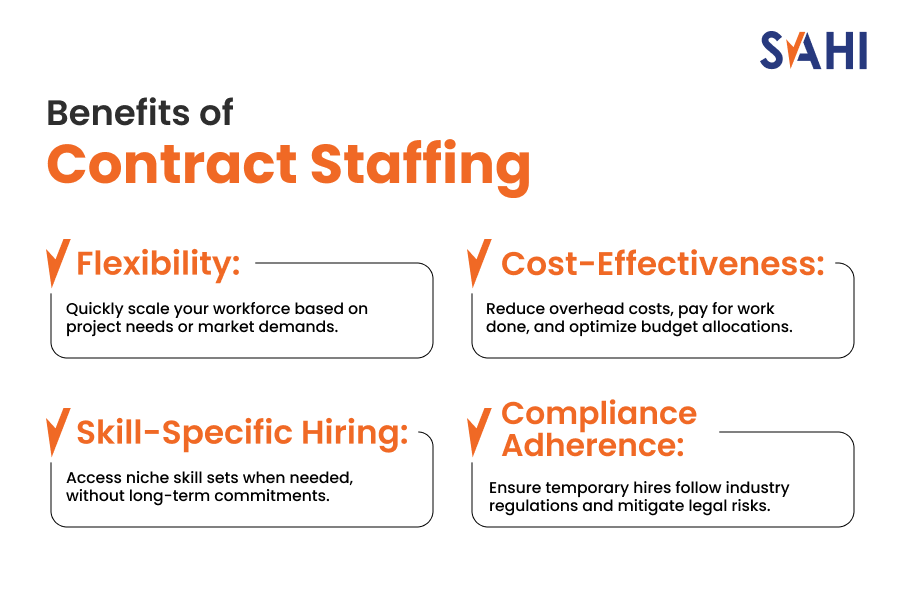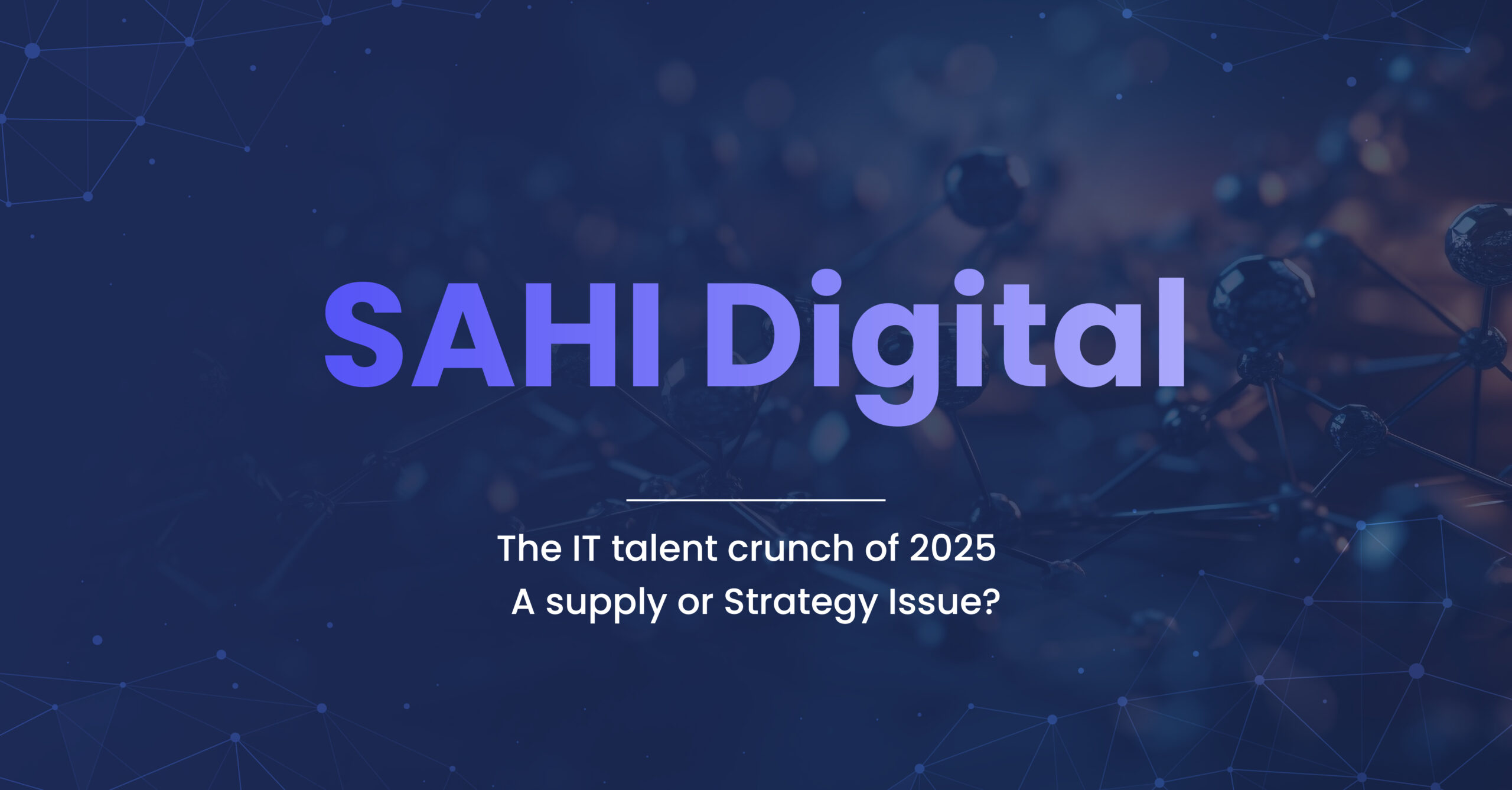In today’s rapidly evolving business environment, blue and grey-collar workers stand as the backbone of many industries.
These segments of the workforce, often characterised by their hands-on, skill-specific roles, play a pivotal part in driving operational excellence and ensuring ground-level productivity. Whether it’s manufacturing, logistics, or maintenance, their contributions are indispensable and form the bedrock of organisational growth.
However, with the shifting dynamics of the employment landscape, the traditional ways of hiring and managing this vital workforce segment are undergoing transformation. Enter the realm of contract staffing.
Not only does contract staffing provide businesses with the agility to scale their operations on-demand, but it also offers a streamlined approach to blue collar workforce management. By embracing contract employment, companies can tap into specialised skill sets, maintain compliance, and achieve cost-effectiveness.
This modern staffing approach, thus, is reshaping the way businesses leverage the immense potential of blue and grey-collar workers in the contemporary market.
How has the Blue and Grey Collar Workforce Evolved?
The term “blue collar” originated from the blue uniforms that were typically worn by manual labourers in the early 20th century.
Historically, these workers formed the core of industries such as manufacturing, construction, and mining, engaging in hands-on, labour-intensive tasks. Over the decades, their roles have evolved, with technological advancements introducing them to newer tools, techniques, and even challenges.
In contemporary industries, the blue collar workforce remains paramount. With the advent of automation and digitalization, while some feared redundancy, the reality showcases their amplified relevance.
Today, they interface with technology, ensuring seamless operations in automated factories, managing logistics in digitised supply chains, and ensuring quality in tech-augmented production lines. In essence, the blue collar workforce is at the intersection of traditional manual work and modern technology.
Their significance in today’s dynamic business environment is more pronounced than ever. As companies strive for agility in operations and rapid adaptability to market demands, the role of on-demand temporary staffing and specialised blue collar skillsets cannot be overstated.
Moreover, the evolution mirrors the broader shift in the industry, emphasising adaptability, continuous learning, and integration with the technological landscape.
What is Contract Staffing?
In an ever-changing business milieu, the need for adaptability and scalability in workforce management is paramount. This is where contract staffing, a modern recruitment strategy, emerges as a critical tool for businesses.
Contract staffing, often synonymous with temporary staffing or contract employment, offers organisations the ability to hire professionals on a contractual basis, be it short-term or for specific project durations.
This approach differs from traditional permanent hiring and is especially relevant in industries experiencing seasonal demands, project-specific requirements, or rapidly changing technological landscapes.

What is Contract Staffing in Recruitment & Its Benefits?
At its core, contract staffing refers to the employment of skilled individuals on a non-permanent basis, often for predetermined periods or specific projects.
The benefits of this contemporary recruitment model are numerous:
Flexibility
Allows businesses to quickly scale up or down based on project needs or market demands, making workforce management more agile.
Cost-Effectiveness
Reduces overhead costs associated with permanent hires, such as benefits and long-term salaries. Organisations only pay for the work done, optimising budget allocations.
Skill-specific hiring
Provides the opportunity to tap into niche skill sets on an as-needed basis. Companies can bring in experts for specific tasks without long-term commitments.
Compliance adherence
With specialised staffing services, businesses can ensure that all temporary hires adhere to industry-specific regulations and standards, mitigating potential legal risks.
How to Align Contract Staffing with Business Goals?
In the intricate dance of modern business operations, achieving agility and maintaining a competitive edge have become non-negotiable.
Contract staffing, an essential component of blue-collar workforce management, plays an instrumental role in this quest. Hence, allowing businesses to fine-tune their staffing strategies in line with evolving goals and market demands.
One of the most profound advantages of contract staffing is its capacity to enhance business agility. Traditional hiring processes, with their lengthy timelines and rigid structures, often impede swift adaptability.
In contrast, on-demand temporary staffing services enable organisations to quickly respond to market shifts, project influxes, or unexpected challenges. This real-time adaptability can mean the difference between capitalising on opportunities and being left behind.
Furthermore, the intrinsic competitiveness of the modern business landscape demands a workforce that’s not just skilled, but perfectly aligned with the unique requirements of specific projects.
Contract staffing offers tailored solutions that cater to these specific needs. Instead of a one-size-fits-all approach, businesses can leverage temporary employment agencies to pinpoint the exact skill sets required.
This ensures that each project is manned by individuals best suited for the task at hand.
In essence, by intertwining contract employment with their strategic objectives, businesses can foster a more responsive, efficient, and competent workforce.
As a result, this drives optimal results but positions the organisation favourably in a bustling, competitive marketplace.
How to Approach Contract Staffing? Things to keep in Mind
Approaching contract staffing requires a strategic mindset. Here’s a concise guide:
Define Clear Objectives
Before diving into contract staffing, determine your specific needs. Is it short-term project support, seasonal demand, or expertise in a niche area?
Legal Compliance
Ensure adherence to labour laws and regulations. Understand obligations towards contract staff, from remuneration to workplace safety.
Choose the Right Agency
Collaborate with a reputable staffing agency that understands your industry and can provide quality candidates quickly.
Transparent Agreements
Clearly outline roles, responsibilities, compensation, benefits, and contract duration. Address scenarios like early termination or contract extension.
Integration & Onboarding
While contract staff might be temporary, effective onboarding ensures they become productive quickly.
Monitor Performance
Keep track of their work quality, fit to company culture, and any training requirements.
Maintain Open Communication
Regular feedback and open channels of communication foster better performance and address potential issues.
Plan Exit Strategies
As contracts end, have processes for handovers, feedback, and potential contract renewal.
What are some strategic Insights for CHROs?
Chief Human Resources Officers (CHROs) stand at the nexus of organisational strategy and human capital management.
In today’s dynamic business landscape, their role is not just about managing talent but about aligning talent strategies with overarching business goals. Contract staffing, a cornerstone of modern blue collar workforce management, offers CHROs a multifaceted tool to navigate these complexities with finesse.
Talent acquisition, a perennial challenge for many organisations, undergoes a paradigm shift with contract staffing. Instead of navigating the tumultuous waters of permanent hiring with its long lead times and fixed commitments, CHROs can employ on-demand temporary staffing services.
This approach enables them to rapidly bring onboard niche skills for specific projects, ensuring that talent acquisition is both timely and precise. This level of specificity in hiring translates into improved project outcomes and enhanced organisational agility.
Moreover, the flexibility that contract employment brings is unparalleled. In an era where market dynamics can change overnight, having the capability to scale the workforce up or down based on real-time needs is invaluable.
CHROs can thus ensure that human resources are optimally utilised, without the constraints of overstaffing or understaffing.
However, while the benefits of contract staffing are manifold, it also introduces a new set of compliance challenges. Temporary employment, being distinct from traditional employment, comes with its own regulatory landscape.
Moreover, CHROs must be vigilant to ensure that contract staffing adheres to all industry-specific regulations and standards. Partnering with reputable employment agencies that prioritise compliance can be a prudent strategy in this regard.
By instilling best practices and ensuring rigorous adherence to regulations, CHROs can mitigate potential legal risks associated with contract hires.
What are the Benefits for Business Unit Heads?
For Business Unit Heads, the heart of successful operations lies in the synergy between strategy and execution.
With the ever-accelerating pace of business and the increasing demands of diverse projects, it becomes essential to have an adaptive workforce strategy in place. This is where contract staffing shines, offering unparalleled advantages for operational efficiency and financial management.
Operational Efficiency
One of the primary advantages of on-demand temporary staffing is the boost it provides to operational efficiency.
As business units often grapple with fluctuating demands, be it seasonal upticks or project-based surges, the flexibility of contract employment ensures that the workforce scales in tandem. This means that resources are neither spread thin nor left underutilised.
The ability to swiftly onboard skilled blue and grey-collar workers for specific tasks or durations ensures that projects remain on track. Plus, it guarantees deadlines are met, and the quality of output is uncompromised.
Beyond operational efficiency, there’s a compelling financial narrative to be made for contract staffing. Business Unit Heads, always on the lookout for cost-optimization, will find that temporary staffing services are a boon.
The financial model behind contract staffing bypasses many overhead costs associated with permanent hires, such as long-term benefits and entrenched salaries. By only incurring costs for the actual work and duration required, businesses can achieve significant cost savings.
As a result, projects are completed within budget while upholding performance excellence.
What is Contract Staffing from a CEO’s Perspective?
At the helm of an organisation, a CEO’s viewpoint is primarily anchored in broad strokes – profitability, market position, sustainability, and the overarching vision for the future.
Through this macro lens, contract staffing emerges as more than just a recruitment strategy; it becomes a strategic lever for transformative growth.
The immediate allure of contract staffing for CEOs lies in its tangible impact on profitability. By leveraging on-demand temporary staffing, organisations can drastically reduce fixed overheads associated with permanent employment, directly enhancing the bottom line.
But beyond mere cost savings, contract employment ensures that resources are deployed efficiently, ensuring that every dollar spent yields maximum value.
Moreover, in the ever-competitive business arena, market positioning is paramount. The agility offered by contract staffing translates into quicker go-to-market strategies, rapid scaling in response to opportunities, and a nimble adaptation to changing market dynamics.
This agility inherently strengthens an organisation’s market position, enabling it to stay ahead of competitors and respond adeptly to industry shifts.
Sustainability, a long-term concern for any CEO, is bolstered by the adaptable nature of contract staffing. By fostering a workforce that can evolve with market trends, technological advancements, and organisational shifts, CEOs ensure the longevity and resilience of their businesses.
The ability to tap into niche skills, on demand, also ensures that innovation remains at the forefront, further cementing future sustainability.
Lastly, every CEO’s vision is underpinned by specific organisational objectives. Here, the versatility of a contract workforce becomes invaluable.
Whether the goal is market expansion, product diversification, or technological innovation, having the right talent at the right time is pivotal. Contract staffing guarantees this alignment, ensuring that the workforce is always in sync with the evolving objectives of the organisation.
How to Address Compliance and Risk with Contract Employment?
In the realm of contract employment, while flexibility and agility are evident boons, there’s an underbelly of compliance and risk that organisations cannot afford to overlook.
With the landscape of workforce management continuously evolving, regulations around temporary employment and staffing services have become intricate, demanding careful attention and adherence.
The importance of adhering to these regulations goes beyond legalities. It shapes an organisation’s reputation, safeguards against financial repercussions, and ensures a fair, respectful treatment of the blue and grey-collar workforce.
Non-compliance isn’t just a potential legal quagmire; it can erode trust, both from the workforce and from stakeholders.
However, navigating the world of contract employment compliance isn’t without its pitfalls. Misclassification of workers, overlooking specific regional or industry-specific regulations, or failing to provide mandated benefits can have severe consequences.
To avoid these, organisations must:
Stay Informed
With laws around temporary staffing services constantly evolving, organisations should regularly update themselves on local and international regulations.
Engage Experts
Partnering with reputable employment agencies that prioritise compliance can offer guidance and assurance.
Implement Checks and Balances
Regular audits and reviews ensure that compliance standards are consistently met.
How to embrace the Future with On-demand Temporary Staffing?
The business world today is characterised by rapid evolution, driven by technological advancements, shifting consumer preferences, and a dynamic global landscape.
At the heart of this change lies the trend towards on-demand temporary staffing, a paradigm shift that’s revolutionising how organisations approach workforce management.
Gone are the days when businesses solely relied on a fixed, permanent workforce. The advent of on-demand temporary employment caters to the need for agility and adaptability.
Projects are becoming more specialised, and the need for specific skill sets for short durations is more prevalent than ever. Instead of bearing long-term commitments, businesses can now align their talent pool with immediate needs, ensuring optimal utilisation and productivity.
This trend is not merely about flexibility; it’s about efficiency and competitiveness. With on-demand staffing services, businesses can respond to market changes almost instantaneously, gaining a significant edge over competitors.
Moreover, it enables organisations to tap into a global talent pool, ensuring that the best skills are accessible regardless of geographical boundaries.
Conclusion
In today’s dynamic business landscape, the value and versatility of blue-collar and grey-collar workers cannot be overstated.
Contract staffing, as a strategic tool, has emerged as the linchpin for unlocking their immense potential, aligning perfectly with the mission of reimagining workforce management. It not only amplifies operational efficiency and business agility but also fortifies an organisation’s position in the competitive market.
CHROs, Business Unit Heads, and CEOs stand at a pivotal juncture. The call of the hour is to embrace temporary staffing services, innovating and optimising talent strategies to stay ahead of the curve.
With the right approach, the benefits – from cost-efficiency to unmatched flexibility – are manifold. At the heart of this transformation, SAHI remains committed to fostering excellence, guiding organisations in harnessing the boundless opportunities contract employment offers.
It’s time to reimagine, redesign, and reignite the potential within our workforce. Together, let’s shape the future of employment


